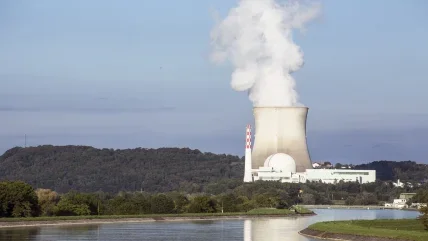
In the past decades, China has been developing actively and orderly a domestic nuclear fleet. The State of Council approved 10 reactors in 2022 which made 23 new reactor projects having been approved over the period 2019 to 2022. As of today, there are 55 reactors in operation and 23 are under construction across China.
Looking ahead, the nuclear installed base should reach around 104 GWe by 2030 and will play an important role in the energy mix to support China’s carbon-peak and carbon-neutral strategy, especially if China maintains this pace of development.
This nuclear energy programme is in good shape and seems achievable even if it is ambitious. The nuclear programme is also supported by:
- A long-established supply chain for nuclear power,
- A strong political willingness to close the cycle and launch a fourth generation (Gen IV) reactor build-out programme. Yet still, there are obvious challenges that this program could face:
- The newly-identified capacity in coastal sites to support the development at the current pace until 2045~2050.
- However, technology innovation and the increasing competitiveness of the other low-carbon energies, such as renewables, which could win more attention and support from both the administration and the public, hence slowing down the development of nuclear power.
Besides the massive investment drive into large-scale Gen III and Gen IV PWR reactors, China has also been encouraging innovation and R&D into smaller SMR and AMR designs and several demonstration projects have been newly launched.
This ambitious and diversified civil nuclear energy programme has, in turn, led to action on other aspects of the nuclear cycle such as to secure the supply of U3O8, and to launch new capacity in uranium conversion and enrichment, as well as new R&D projects. As a consequence, the main Chinese nuclear players have been rapidly realising the development of multi-model transport management systems as well as a larger scale transport package fleet to match the rapidly-increasing demand for nuclear material transport. An increasing number of engineering companies and capable manufacturers have been allocating more attention and driving more investments into the development of transport packages that are extensively used within China, such as the CNFC3G fresh fuel transport package that was designed by the CNNC subsidiary unit China Nuclear Power Engineering (CNPE). China’s first domestically-designed 100-tonne used fuel transportation cask, which can hold 21 used fuel assemblies, was also first manufactured in 2021. Stronger support has also been put in place by the relevant competent authorities and the industry to strengthen transport capacity in several areas, for example the diversified transport mode of U3O8 from Alashankou to conversion facilities, as well as the first INF3 vessel which began service in 2021. INF3-class vessels are the highest level of the International Maritime Organization’s code for the regulation of shipments of packaged irradiated fuel and other high-level radioactive wastes.
Despite the rapidly-growing industrial capacity in the main areas of transport as it relates to the nuclear fuel cycle, Chinese nuclear groups will still rely in the future on international cooperation in the overseas transport supply chain, public acceptance, and licensing, as well as specific packages for diversified needs. From WNTI’s regional perspectives – supported by ORANO NPS China, Chinese nuclear groups have been very open to international cooperation in these areas. Solid evidence for this comes from the participation of five of the main Chinese players in RAM transport who will be represented at PATRAM22. This is major step forward compared to previous events.
Author: Steven Shi, Orano Group






